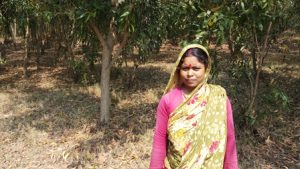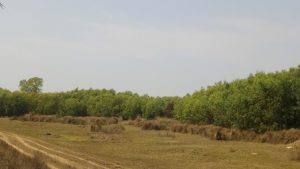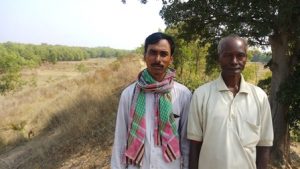West Bengal’s villagers rethinking sustainability
The Chronic Property Resource management that was started at Kashiara village in Birbhum way back in 1999 has been extended to 120 kilometres in Birbhum district with 108 active groups.

Madhavi Das feels relieved nowadays. She doesn’t have to walk for 10 kilometres to gather firewood for cooking. The 45-year-old no longer has to put her life at stake from fear of venomous snakes or be wary of harassment by strangers.
A housewife, Madhavi who lives in Lahadda village in Labhpur block of Birbhum district in West Bengal gets the regular supply of firewood just a few meters away from her house where a small forest provides for her needs of biogas.
Madhavi is not alone as hundreds of women in Lahadda and neighbouring villages of Labhpur now depend on the forest for firewood and fodder for their livestock.
This was not the case until a few years ago when women and children had to walk several kilometres to arrange firewood and fodder.
She is grateful to the Common Property Resource (CPR) management adopted by the farmers that has not only made lives easier for several women like her but has also added to the revenue of their families. It has also stopped soil erosion to some extent.
Also read: Promoting Healthy Diets through Local Food Systems
“Under the CPR initiative, around 14 farmers and landless labourers in Lahadda village in 2004 joined hands and formed Chetna Sangha Chasi Dal. They then took around four kilometres of unutilised and barren lands on lease on the bank of river Kuie from the local panchayat samiti for a period of 20-30 years.”
The villagers then collectively planted trees, shrubs and also protected them. Usually, the roadsides and land close to the canals were chosen where barren land was available.

The old trees were then felled with due permission from the forest department in 2016. Around 25 per cent of the revenue from the sale of the trees went to panchayat samiti while the rest was shared equally by the group members.
Farmers in Lahadda say that the programme has brought them additional income besides providing them with easy availability of fodder and firewood and also increasing the natural content of the soil.
“We usually depend on rains for farming but erratic rainfall had been causing losses to us. The situation was extremely bad till a few years ago as we solely depended on farming. The CPR has given us additional income and has enhanced the productivity of the soil,” said Barun Bagdi (60), a farmer who owns around two bighas of land in the village.
Sharing the figures, he said, trees amounting to around Rs. 5.20 lakh were felled and auctioned in 2016 out of which Rs. 80,000 of the revenue was given to panchayat samiti as its share while the remaining Rs.4.40 lakh was shared by 14 group members.
“The four kilometre stretch which is now full of greens has provided shelter to many types of birds, small animals and pollinating insects. The birds in turn have brought seeds of many trees and woodlot also acts as a barrier to storms in nearby crop fields. Besides, the falling leaves from the trees get mixed with the soil and increase its nutrient content. The farming is also organic in nature. We also get constant fodder for livestock and also biomass in ample supply as gradual shrinking of grazing land and loss of access to forest was creating acute shortage of fodder,” says Ashok Das, a member of the Chasi Dal.
Also read: Promote biotechnology and nano-technology for sustainable agriculture: Vice President
The CPR that was started at Kashiara village in Birbhum way back in 1999 has been extended to 120 kilometers in Birbhum district with 108 such groups actively taking up the CPR programme.
“A major role in the success story has also been played by Development Research Communication and Services Centre (DRCSC), a non-profit working for farmers in West Bengal that provided the groups with seeds, training for raising seedlings and transplanting them.”

“It was difficult to convince farmers initially as they were quite apprehensive of the programme. But somehow we managed to bring them under the fold as they became assured of returns. Usually 12-15 varieties of trees and six-eight types of shrubs were planted along with some seasonal crops in initially to get some short-term return. The programme has been hugely successful as it has not only brought income for them but has also contained soil erosion to some extent. Trees or plants on the verge of extinction have also been brought back in the biodiversity net,” said Hasibur Rahman, field officer at DRCSC.
While pointing to the hiccups, Rahman said, that the groups have to be closely monitored to resolve conflicts at an initial stage. “It takes time for the first batch of trees to be auctioned but as the trees have grown in numbers, the second felling will not be taking much time. It will obviously increase their income. Apart from building a group asset, this system can be adopted and supported by concerned departments of the government.”
